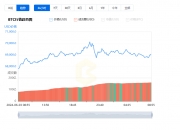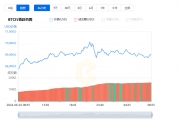
?
Web3去年与元宇宙相伴而生,热度持续至今仍未消退,这对双生子一度被认为是当前互联网领域最新概念之一,不同的是,元宇宙由于可操作性较大,目前已获得一些地方的政策性认可且开始逐渐推进,而Web3则从诞生之日起至今从未间断地饱受争议。业界关于Web3的争议主要体现在定义不清、边界模糊,甚至认为其有过度炒作的嫌疑,我们对此进行一些分析。
Web3 was born with the meta-cosm last year, and the heat continues to last, which was once considered to be one of the most recent concepts in the current Internet arena. Unlike the meta-cosmos, which, because of its greater operationality, has now gained some local policy recognition and is beginning to move forward, Web3 has been unbroken ever since its birth.
● Web3是什么,与Web2.0、Web1.0有什么区别?
What's the difference between Web 2.0 and Web1.0?
众所周知,Web1.0与Web2.0都与万维网技术相关,之所以如此是因为它们兴起于移动互联时代之前,那是一个仍然由网站主导的互联网时期。
It is well known that Web1.0 and Web 2.0 are associated with Web technology, and this is because they emerged before the era of mobile connectivity, which is still a web-based Internet period.
Web1.0的特征是大多数网络活动都与静态网页相关,而它本身是一个返璞词,是为了区分Web2.0而被创造,指的是万维网发展的第一阶段,大概的时间约从1991年至2004年。这段时期的内容创作者很少,平台编辑是主要生产力,用户只是内容的消费者。
The characteristics of
Web1.0 are that most web activities are related to static web pages and that they are themselves reverberating words created to distinguish between Web 2.0 and the first phase of World Wide Web development, some time from 1991 to 2004. There are very few content creators, platform editors are the main productivity, and users are just consumers of content.
Web2.0大幅扩展了网站的交互性,网络社区、社交网站、博客、Wiki的出现一定程度上丰富了万维网的技术成分,其“互动、分享、关系”理念深入人心,大量用户成为内容生产者。2.0带来的繁荣延续到移动互联时期后,将这种状态从万维网扩大到互联网的多个方面,包括移动终端和云时代的应用,持续至今。
Web2.0 has significantly expanded the interactive nature of the website, and the emergence of the web community, social networking sites, blogs, and Wiki has enriched the technical content of the World Wide Web to some extent, with the concept of “interactivity, sharing, relationships” gaining ground, with a large number of users becoming content producers. The boom of 2.0 continues to extend from the World Wide Web to multiple aspects of the Internet, including mobile terminals and cloud age applications.
?

Web3.0传统的概念我们后面会提及,而现有比较热门的概念则是由以太坊联合创始人Gavin Wood于2014年提出,并于2021年受到区块链加密货币从业者、区块链科技公司和风投公司的持续关注。按照这领域的说法以及所谓的Web3基金会的设想,Web3有望成为一个去中心化、不可改变的网络版本,没有中间商,并以同样的加密验证能力来构建,而这种加密验证能力已经产生了加密货币、不可伪造的代币(NFT)等,由分布式账本或Dapps支撑的新型应用。
The traditional concept of
Web3.0 will be mentioned later, whereas the existing more popular concept was proposed in 2014 by Gavin Wood, a co-founder of Ether's association, and continued attention in 2021 by block chain encryption money operators, block chain technology companies, and wind pitchers. According to this area, and as envisaged by the so-called Web3 Foundation, Web3 is expected to become a central, non-changeable web version, with no middlemen and built with the same encryption authentication capability that has produced new applications supported by encrypted currency, non-falseable tokens (NFTs), etc., distributed books or Dapps.
● Web3.0历史提出回顾
Web3.0 historical review
第一次提出Web3.0的时候显然不是2014年,当人们认识Web2.0时必然对Web3.0有所展望。回顾过去我们能够发现一些线索。
apparently wasn't in 2014 when we first introduced Web3.0, and when people knew Web 2.0, they had to look at Web3. Looking back, we could find some clues.
2006年5月的时候,万维网之父蒂姆?伯纳斯?李曾提及自己对Web3.0的看法:“当SVG在Web 2.0的基础上大面积使用,所有东西都起波纹、被折叠并且看起来没有菱角,以及一整张语义网涵盖着大量的数据,你就可以访问这难以置信的数据资源。”
In May 2006, Tim Bernards, the father of the World Wide Web, mentioned his view of Web3.0: “When SVG is used on a large scale on the basis of Web 2.0, everything is stubble, folded and appears to be free of diamond horns, and a whole synonym covers a large amount of data, you can access this incredible data resource.”
2006年11月Yahoo杨志远在Technet峰会上的阐释:Web3.0将更加深化网络效能,是一个真正的公共载体,专业、半专业和消费者的界线越来越模糊,创造出一种商业和应用程序的网络效应。
Netflix创始人Reed Hastings在同峰会上简单定义:“1.0是拨号上网,50K平均带宽,2.0是1M平均带宽,那3.0就该是10M带宽,全影像的网络,这才感觉像Web3.0。”
Yahoo Yeung Ji-won explained at the Technet Summit in November 2006: Web3.0 will deepen network effectiveness as a real public carrier, with increasingly blurred lines of professional, semi-professional and consumerism, creating a network effect of business and applications.
Netflix founder Reed Hastings defined it as simply at the Summit: “1.0 is dial-up Internet, 50K average bandwidth, 2.0 is 1M average bandwidth, then 3.0 is a 10-M bandwidth, full video network, which feels like Web3.0.”
2007年8月,时任谷歌CEO埃里克?施密特出席首尔数字论坛被问及Web3.0的定义时表达了看法:构建方法不同,比如Web2.0的出现回应了AJAX技术,而3.0预测是拼凑在一起的应用,具有程序小,传播快的特征。
In August 2007, Google CEO Eric Schmidt was asked about the definition of Web3.0 at the Seoul Digital Forum to express the view that different construction methods, such as the appearance of Web 2.0, responded to AJAX technology, while projections of 3.0 were a patchwork of applications with small procedures and fast-dissemination features.
● Web3的质疑与争论
可见传统业界对Web3.0的定义不一而足,概念也是琳琅满目,且随着技术进展不断变化。许多业内知名人士甚至反感对Web3.0下定义,认为这是不必要的行销。显而易见的是,传统Web3.0概念发展更趋向于万维网技术的延伸,比如持续发展的语义网、创造流行的新框架、更好的浏览器、数据安全/可扩展性大幅提高、标准化范围扩大等等。而且传统的声音在2007年之后就鲜有所闻,取而代之的是对Web3.0超边界的过度定义。
It can be seen that the traditional industry defines Web3.0 in a variety of ways, and that the concepts are plentiful and constantly changing as technology evolves. Many industry personalities even resent the definition of Web 3.0 as unnecessary marketing. It is clear that the traditional Web3.0 concept has evolved more towards the extension of Web technology, such as the continued development of semantic networks, the creation of popular new frameworks, better browsers, significant improvements in data security/extensibility, and greater standardization.
?

事实上,Web3.0现阶段的争议焦点在于,单单以区块链技术的角度来定义Web3.0难以被业界广泛接受,所以许多观点不认同这样的Web3.0,他们将之称为是区块链相关的“Web3”。埃隆?马斯克甚至公开对Web3进行嘲讽:“有人看过Web3吗? 我没有找到。”
In fact, the point of contention at this stage of Web3.0 is that it is difficult to define Web3.0 from the point of view of block chain technology alone to be widely accepted by industry, so many views do not agree with this Web3.0, which they call “Web3” associated with the block chain.
互联网发展至今,特别是过去十年里由云计算与AI技术发展带来的算力革命,改变了许多事物。在Web2.0时代,万维网仍然是互联网的内容主体,而移动互联时代则不同,万维网的成分被大量挤压,尽管其仍然是互联网的主要组成部分之一,但严格来说,我们不能把移动APP、云原生,乃至区块链技术、元宇宙等近乎所有的一切都归于Web体系。所以那些将Web3等同于下一代互联网的概念定义,难免被视为是对万维网与互联网概念的偷梁换柱,以及过度的行业营销行为。因此,Web3的概念定义并不符合Web的本质,也没有对Web技术的延伸和发展作出解释,它更多地重复了Web2.0已有的概念实现,而区块链式的去中心化也是无本之末的乌托邦。
In the Web 2.0 era, the World Wide Web was still the subject of Internet content, unlike in the mobile interconnection era, where its components were heavily squeezed, although it is still one of the main components of the Internet, but strictly we cannot attribute to the Web almost everything that moves AP, cloud birth, or even web-chain technology, meta-cosm, etc. The concept that equates Web3 with the next generation of the Internet is inevitably viewed as a stifling of the web and Internet concept, as well as excessive industry marketing. Thus, the concept of Web3 does not correspond to the essence of Web, nor does it explain the extension and development of Web technology, which more often repeats the concepts that already exist in Web 2.0, and the centralization of the sector chain is also the last Utopia.
有目共睹的是,万维网的时代并非过去式且将来仍有可为,因为Web技术的发展一脉相承且标准成熟,发展虽慢但是细水长流,技术进程也比较平稳。在移动互联生态相对封闭的形势下,跨平台的浏览器技术仍有进步空间,语义网的未来也不再是梦。我们期盼一个真实、可靠,能够真正代表万维网技术延续的Web3.0,而不是Web3。
As you can see, the era of the World Wide Web is not old and will be promising, because web technology is developed in a coherent manner and with mature standards, slow but slow water flow, and technological processes are relatively smooth. In the context of relative isolation of mobile interconnected ecosystems, there is still room for progress across platforms, and the future of semantic networks is no longer a dream. We look forward to a real, reliable Web 3.0 that truly represents the continuation of Web technology, rather than Web3.
文/陈徐毅 高级工程师,科技专栏作者,中国计算机学会会员
本文刊发于《中关村》第227期
?
/Ten Xu Yi, Senior Engineer, Science and Technology columnist and member of the Chinese Computer Society
?
注册有任何问题请添加 微信:MVIP619 拉你进入群

打开微信扫一扫
添加客服
进入交流群




















发表评论